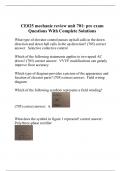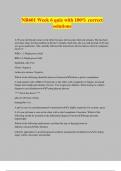Resume
Summary Adaptive and stress physiology
- Établissement
- Katholieke Universiteit Leuven (KU Leuven)
This summary contains all the needed information for this course. Including the animal part of prof. Temmerman and the plant part of prof. Rolland
[Montrer plus]












